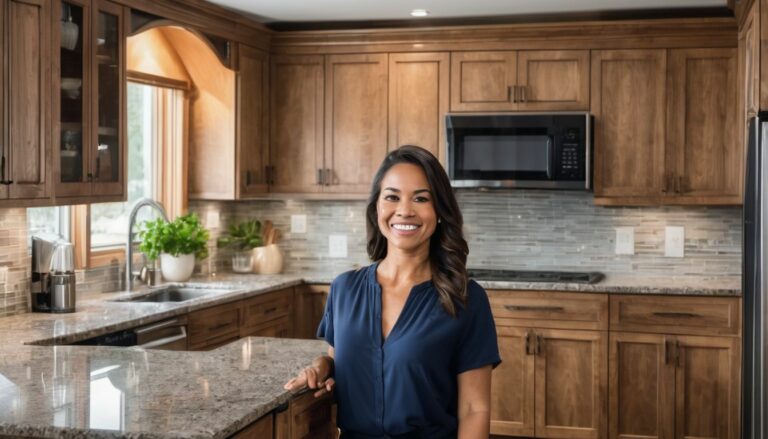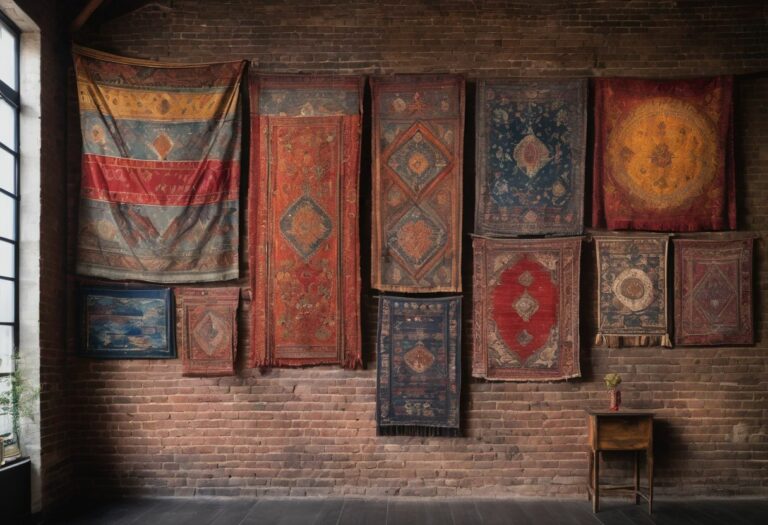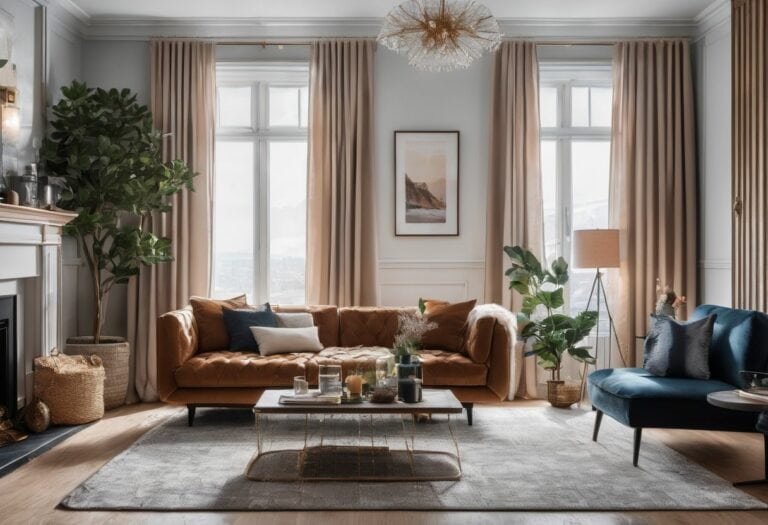Is Engineered Wood Furniture Good or Bad? | A Comprehensive Comparison
Both solid wood and engineered wood furniture have their own advantages when it comes to durability and longevity.
How solid wood and engineered wood furniture fare
I am going to give a detailed comparison of how solid wood and engineered wood furniture fare.
| Solid Wood Furniture | Engineered Wood Furniture | |
|---|---|---|
| Durability | Offers high durability due to the quality of materials used. It can last for 15-20 years. | Engineered wood is not as durable. It features a thinner wear layer and may not have the same lifespan. |
| Design Flexibility | Solid wood furniture wins at design flexibility. It’s a preferred choice for homeowners. | Engineered wood lacks this feature. It’s not as favored due to its limited life span. |
| Maintenance | Requires less maintenance and stands up better to wear and tear. | Engineered wood furniture may require more maintenance over time. |
| Cost | It is more expensive because of the high-quality materials used. | Engineered wood is a more affordable option, making it budget-friendly. |
As we can see from the table, both types of wood have their features and limitations. It’s up to you to choose what fits your needs and budget best.
Is engineered wood furniture good or bad: Aesthetics
Engineered wood furniture offers a wide range of options when it comes to texture and finish, making it suitable for various interior design styles. Curious to learn more about the aesthetics of engineered wood furniture? Read on!
Furniture texture and finish
The texture and finish of furniture play an important role in its overall appearance. When choosing between engineered wood and solid wood furniture, it’s essential to consider the different textures and finishes they offer.
Solid wood furniture often has a natural, rich grain pattern that adds warmth and character to any space. The smoothness and quality of the finish can vary depending on the type of wood used and the craftsmanship involved.
On the other hand, engineered wood furniture usually has a consistent texture due to its manufactured nature. While some may perceive this as a drawback, others appreciate its uniformity for modern or minimalist designs.
Usage
Indoor and outdoor usage play a significant role in determining the suitability of engineered wood and solid wood furniture.

Indoor vs outdoor usage
When it comes to indoor and outdoor usage, both engineered and solid wood furniture have their unique strengths and weaknesses. It’s important to note that outdoor wooden furniture should be specifically designed for commercial outdoor use. Indoor furniture, on the other hand, tends to fade and discolor faster depending on the type of wood used and the extent of exposure to sunlight.
| Type of Furniture | Indoor Usage | Outdoor Usage |
|---|---|---|
| Engineered Wood Furniture | Engineered wood furniture is popular for indoor use because it is lightweight, has a smooth finish, and is cost-effective. | Engineered wood furniture may not be the best option for outdoor use. While it can initially withstand some exposure to moisture, long-term outdoor exposure can lead to warping and damage. |
| Solid Wood Furniture | Solid wood furniture, with its natural beauty and durability, is a common choice for indoor use. However, exposure to sunlight can cause it to fade and discolor faster. | For outdoor use, solid wood furniture is often preferred. When designed for outdoor use, it can withstand changing weather conditions. But it requires regular maintenance to ensure its longevity. |
In conclusion, the choice between engineered and solid wood furniture for indoor or outdoor usage primarily depends on your specific needs, preferences, and budget.
Eco-friendliness
Engineered wood furniture has a significant impact on the environment, making it an important consideration when deciding between solid wood and engineered wood furniture.
Impact on the environment
The impact of engineered wood furniture on the environment is an important consideration. One key factor is the potential release of harmful gases, like formaldehyde, which can affect indoor air quality and human health.
To minimize this, it’s crucial that manufacturers follow green manufacturing practices and ensure their products are free from harmful emissions. On the other hand, solid wood furniture is generally considered more eco-friendly than engineered wood because it uses organic materials from renewable resources.
When making a decision about furniture, it’s essential to take into account the environmental impact and air quality of both options to make ecoconscious choices for our homes and our planet.
Mobility and Weight
Comparing the weight and ease of moving for each type of furniture, engineered wood furniture offers a lightweight alternative that makes rearranging your space a breeze. Want to know more about the benefits of solid wood and engineered wood furniture? Keep reading!
Comparing the weight and ease of moving for each type of furniture
Solid wood furniture and engineered wood furniture differ in weight and ease of moving. Engineered wood furniture is generally lighter, making it easier to move compared to solid wood furniture. This is because engineered wood is designed to be lightweight while still providing durability and strength. On the other hand, solid wood furniture tends to be heavier due to its density. As a result, transporting and maneuvering solid wood furniture can be more challenging. It’s important to note that placing heavy items on engineered wood furniture may lead to sagging, cracking, or loss of structural integrity if there isn’t enough support. Overall, if mobility and ease of moving are important factors for you, engineered wood furniture may be a better choice due to its lighter weight and easier transportability.
Benefits of Solid Wood Furniture
Solid wood furniture offers exceptional durability and longevity, making it a worthwhile investment that can last for generations.
Longevity and resale value
Solid wood furniture is known for its exceptional longevity and resale value. Unlike engineered wood furniture, which typically lasts around 10-15 years, solid wood furniture can endure for 15-20 years or even longer with proper care.
This durability means that you can enjoy your solid wood pieces for many years without worrying about them falling apart or losing their appeal.
In addition to their long-lasting nature, solid wood furniture also holds its value well over time. Because of its high-quality construction and timeless aesthetic, it retains its desirability in the resale market.
So if you ever decide to upgrade your furniture or simply want a change, you can sell your solid wood pieces at a good price compared to engineered wood alternatives.
Benefits of Engineered Wood Furniture
Engineered wood furniture offers a cost-effective and budget-friendly option for those on a tight budget.
Cost-effective and budget-friendly
Engineered wood furniture is a great option if you’re looking for something that’s cost-effective and budget-friendly. Compared to solid wood furniture, engineered wood furniture is significantly cheaper, making it more affordable for many people.
Not only does it offer a lower price tag, but it also provides value for money with its durability and longevity. Engineered wood furniture allows you to enjoy the benefits of owning furniture without breaking the bank.
It’s an economical choice that doesn’t compromise on quality or style. Plus, being environmentally friendly and sustainable, it’s a win-win situation for your wallet and the planet.
Conclusion: Making the Right Choice for You
In conclusion, when it comes to choosing between engineered wood and solid wood furniture, there is no clear winner. It ultimately depends on your specific needs and priorities. Engineered wood furniture offers cost-effectiveness and durability, making it a great option for those on a tight budget.
On the other hand, solid wood furniture boasts longevity and resale value. Consider factors such as aesthetics, usage requirements, eco-friendliness, mobility, and weight before making your decision.
Choose what works best for you!
FAQs
1. What is engineered wood furniture?
Engineered wood furniture is made from various types of composite materials, such as plywood or particleboard, that are formed together using adhesives and pressure.
2. Is engineered wood furniture good quality?
Yes, engineered wood furniture can be good quality. It offers durability and strength similar to solid wood at a lower cost.
3. What are the benefits of engineered wood furniture?
Engineered wood furniture is less prone to warping and cracking compared to solid wood. It also allows for more design versatility and uses fewer natural resources in its production.
4. Are there any disadvantages to using engineered wood furniture?
One disadvantage of engineered wood furniture is that it may not have the same aesthetic appeal or authenticity as solid wood pieces. Additionally, it may contain volatile organic compounds (VOCs) if low-quality adhesives are used during manufacturing.
5. How does engineered wood compare to solid wood in terms of sustainability?
Engineered Wood tends to be more sustainable than solid woods because it utilizes smaller pieces of lumber rather than whole trees and often incorporates recycled materials into its composition







